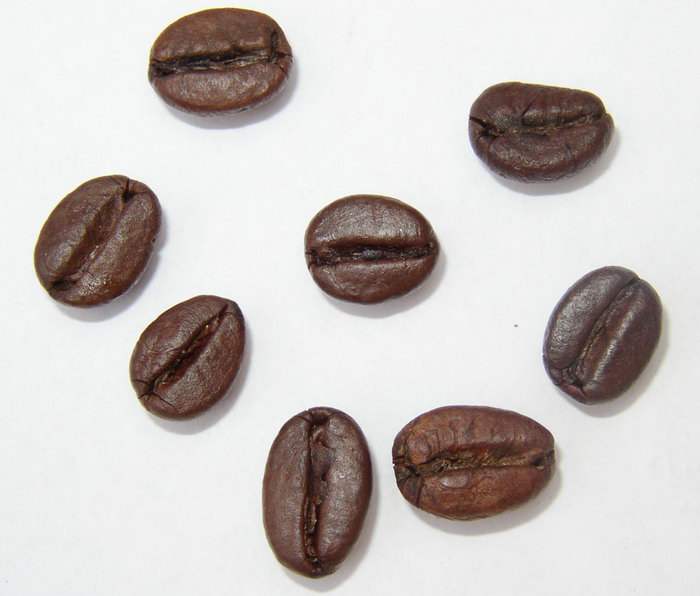The taste of Costa Rican coffee, the producing area of Costa Rican coffee
Follow the caf é (Wechat official account vdailycom) and found that Beautiful Cafe opened a small shop of its own.
Costa Rican coffee is full of Arabica beans, washed with water, its style is bright, fragrant, clear as wind chimes swaying in the breeze, mild acidity and sweetness. Because of the sweetness, even if the coffee gets cold, it tastes very good, which is a major feature of Costa Rican coffee.

Costa Rica's coffee industry started early, with the first batch of coffee exported to Colombia and Chile in 1820. In 1854, an importer and exporter, with the assistance of William, captain of the British merchant ship the Sovereign, successfully exported 100 pounds of coffee to London, which was praised by British aristocrats as the "golden bean" from Costa rica. since then, coffee has become the main cash crop in Costa Rica and changed the humble status of the former Spanish colonies. Increasingly wealthy coffee farmers have sent their children to the UK for further study, where they have returned home to become doctors, and the engineers have returned to their villages.
Tarrazu in Costa Rica is one of the major coffee producing areas in the world. The coffee produced is light and pure in flavor and pleasant in aroma. Costa Rica, with its fertile volcanic soil and good drainage, is the first country in Central America to grow coffee and bananas for commercial value. Coffee and bananas are the country's main exports.
Coffee farmers have a high status in Colombia. In 1897, citizens of the capital witnessed the completion of the National Theater donated by coffee tycoons. Coffee wealth brings stability to Costa Rica's politics, economy and democracy, which is rare in Central American countries. In addition, Colombia has a law that only allows the planting of Arabica, and Robasta is a "contraband" in its territory, which is also the only initiative seen in the world.
Costa Rica's production is small, with an annual output of about 110000 tons, ranking seventh in Central and South America. Costa Rica is dominated by recent coffee varieties, such as Kaddura, Kaduai, New World, etc., while the ancient bourbon and Tibica are rare. There are also many varieties in the territory, the most famous is the bourbon variety Vera Saatchi, a variety of elegant flavor, Brazil has also been introduced and planted, has won a prize. In addition, Costa Rican research institutions have spared no effort to improve the mixed-race Katimo, trying to reduce the stout bean pedigree and enhance the Arabica flavor of Katimo, which has been exported to Asia for trial cultivation in recent years.
Located in the south of the country's capital, San Jose, Tarasu is one of the most valued coffee growers in the country. La MinitaTarrazu coffee is a famous local product, but its production is limited, about 72600 kilograms a year. It is grown on a piece of land called La Minita, which is owned by the last three generations of the Mc Alpine family in the UK. In fact, this land can produce more than 450 tons of coffee a year. But Tarasu Latin America coffee is grown without artificial fertilizers or insecticides, and its harvesting and selection are done by hand, in order to avoid some damage to coffee beans caused by air spray selection.
High-quality Costa Rican coffee is called "extra hard beans". This kind of coffee can grow above 1500 meters above sea level. Altitude has always been a problem for coffee growers. The higher the altitude, the better the coffee beans, not only because the higher altitude can increase the acidity of the coffee beans and thus increase the flavor, but also because the night temperature at the higher altitude is lower, which can make the trees grow slowly, thus making the coffee beans have a stronger flavor. In addition, due to the high altitude drop caused by sufficient rainfall, is also very beneficial to the growth of coffee trees. However, while there are many advantages to growing coffee at higher elevations, the resulting additional transport costs must be taken into account, which is likely to make coffee production unprofitable. The coffee industry in Costa Rica has adopted new technologies to increase efficiency, including the use of "electric eyes" to select beans and identify coffee beans of irregular size.
Important Notice :
前街咖啡 FrontStreet Coffee has moved to new addredd:
FrontStreet Coffee Address: 315,Donghua East Road,GuangZhou
Tel:020 38364473
- Prev

Taste and flavor of Costa Rican coffee, introduction of Costa Rican coffee
Following Cafe (official Wechat account vdailycom) found that the coffee beans produced in the high latitudes of Costa Rica are famous in the world, rich, mild but extremely sour, and the coffee beans here are carefully processed, which is why there is high quality coffee. Tarasu is located in SanJos, the capital of Costa Rica.
- Next

Costa Rican coffee producing area, Costa Rican coffee introduction
Following Cafe (Wechat official account vdailycom) found that Costa Rica has opened a small shop of its own. Costa Rica is a Spanish word that means rich coast. At the top of the Costa Rican national emblem flutters a blue belt with Central America, expressing Costa Ricans' memory of the original federation; below is a white ribbon with green branches and the name of the Republic. National emblem
Related
- Detailed explanation of Jadeite planting Land in Panamanian Jadeite Manor introduction to the grading system of Jadeite competitive bidding, Red bid, Green bid and Rose Summer
- Story of Coffee planting in Brenka region of Costa Rica Stonehenge Manor anaerobic heavy honey treatment of flavor mouth
- What's on the barrel of Blue Mountain Coffee beans?
- Can American coffee also pull flowers? How to use hot American style to pull out a good-looking pattern?
- Can you make a cold extract with coffee beans? What is the right proportion for cold-extracted coffee formula?
- Indonesian PWN Gold Mandrine Coffee Origin Features Flavor How to Chong? Mandolin coffee is American.
- A brief introduction to the flavor characteristics of Brazilian yellow bourbon coffee beans
- What is the effect of different water quality on the flavor of cold-extracted coffee? What kind of water is best for brewing coffee?
- Why do you think of Rose Summer whenever you mention Panamanian coffee?
- Introduction to the characteristics of authentic blue mountain coffee bean producing areas? What is the CIB Coffee Authority in Jamaica?

